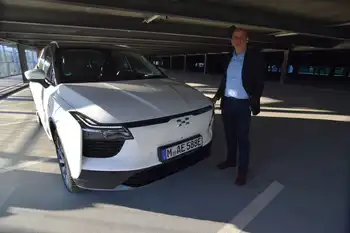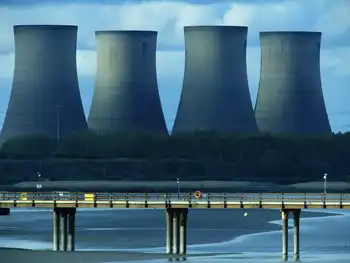California's Electric Policy is Not a Model for the United States
California often is praised as the example to follow in the national mission to reduce energy consumption and greenhouse gas GHG emissions.
California-based companies led the country in 2010 by accounting for more than 60 percent of all U.S. venture capital investments in clean energy, and in recent decades, the state purports to have used aggressive demand-side management DSM and efficiency programs to flatten its per capita electricity demand rate 40 percent below the national average. For the rest of the United States, the necessity to pursue the California model is becoming more clear:
? California is well-positioned to lead on climate policy, said Daniel Sperling, founding director of the Institute of Transportation Studies at the University of California, Davis, and a member of the California Air Resources Board. Sterling, during a Baker Institute conference, said California acts as “a laboratory for others to learn from.”
? In the 2009 article “Climate Change: Copenhagen Fizzled, California Forges Ahead,” Matthew Berger quotes Natural Resources Defense Council Senior Scientist Peter Miller as having said, “California has been a leader for many years now in renewable energy … setting a role model for the rest of the country and the world.”
? And according to the Cleantech Group LLC report “California Leads Nation in Clean Energy Policies, Captures 40 of Clean Technology Venture Investments Since 2006,” “In this race for clean technology leadership, California has distinguished itself at the head of the pack.”
California also has its fair share of detractors when it comes to deciding the success of the stateÂ’s electricity policies. The criticism centers on higher costs, changes in job structure and increases in imports. Overall, the stateÂ’s electricity rates are about 45 percent higher than the national average, and CaliforniaÂ’s strategy appears to be more demand destruction through even higher prices.
California’s newly implemented 33 percent renewable portfolio standard RPS by 2020 could increase electricity costs by nearly 30 percent, according to The Brattle Group’s Jurgen Weiss and Mark Sarro in the 2009 report “The Economic Impact of AB 32 on Small Business.”
That’s 65 percent higher than information put forth by the California Public Utilities Commission CPUC in its report “33 Renewables Portfolio Standard Implementation Analysis Preliminary Results.
The present analysis seeks to augment the growing body of literature declaring that CaliforniaÂ’s position as the leader in sustainable electricity policy is more illusory than real.
California is an exceptional state. In “Stabilizing California’s Demand: The Real Reasons Behind the State’s Energy Savings,” Cynthia Mitchell, Reuben Deumling and Gill Court write that at less than 20 percent, simple linear regression analysis concluded there is “not a high association” between California’s energy efficiency programs and its lower per capita electricity use. At least six characteristics suppress the state’s need for electricity
Stanford University researchers James Sweeney and Anant Sudarshan in the research project “Deconstructing the ‘Rosenfeld Curve’” also affirm that efficiency policies account for just 23 percent of the overall difference between California’s per capita electricity consumption and that of the rest of the country.
In addition to the factors put forth by MitchellÂ’s group, the Stanford researchers found that urbanization, housing unit floor space and household fuel mix all make the California model inapplicable to other states.
These regression results directly contradict the World Bank’s assertion in its “World Development Report 2010: Development and Climate Change” that California’s flattened per capita electricity demand is “thanks largely to utility demand-side management and efficiency standards.” Moreover, California’s relatively flat per capita electricity consumption is not the equivalent of reduced consumption, GHG emissions or both. The state’s total power demand and corresponding carbon dioxide emissions have surged by 25 and 20 percent respectively since 1990, according to the Energy Information Administration EIA.
Following the California model is not only unrealistic for the United States it would be detrimental to national interest. A concerted effort against energy-intensive goods and services has destroyed CaliforniaÂ’s economy. Higher energy prices put domestic firms at a global competitive disadvantage by increasing the cost of doing business.
The Milken Institute reports California firms pay 23 percent more than the national average just to operate. California lost 34 percent of its manufacturing base from 2001 to 2010, according to the California Manufacturing and Technology Association, and Chief Executive magazine repeatedly designates California the nation’s “worst business climate.” California’s auditing agency—its version of the Congressional Budget Office—notes that the state’s 2006 Global Warming Solutions Act, which requires new regulations to reduce GHG emissions to 1990 levels by 2020, will cause “the prices of goods and services to rise lowering business profits and reducing production, income and jobs.”
Stanford’s Sweeney, who also is the director of the university’s Energy Efficiency Center, writes in “The California Electricity Crisis” that underinvestment in generation capacity was a determining factor in California’s electricity crisis in the early 2000s.
According to a University of Texas Center for Energy Economics case study, “Electricity Restructuring in California,” California had “maintained one of the strictest sets of environmental regulations and opposition to industrial sites and in particular power plants could be significant at the local level. This … discouraged investment in new capacity.” This deficiency paved the way toward $40 billion in extra energy costs from 2001 to 2003, or about 4 percent of the state’s total annual economic output, writes Christopher Weare in the Public Policy Institute of California’s “The California Electricity Crisis: Causes and Policy Options.” The United States requires an energy growth strategy. Power consumption will increase 16 to 20 percent from 2010 to 2030 even under ideal DSM and efficiency programs, according to the Electric Power Research Institute in its “Assessment of Achievable Potential from Energy Efficiency and Demand Response Programs in the U.S.” During the next 20 years, the EIA expects the country to add more than two Japans to its gross domestic product GDP, or $8.7 trillion, and to expand its population by the size of France, or 65 million people. Installing the California model would have us painfully contradicting the warning of National Mining Association former President Jack Gerald, who said, “The most expensive kilowatt is the one that’s not there when needed.”
Related News

Berlin urged to remove barriers to PV
BERLIN - The German Solar Association (BSW) has called on the government to remove barriers to the development of new solar and storage capacity needed to replace coal and nuclear generation that is being phased out.
A 52GW cap should be scrapped, otherwise there is a risk that a market slump will occur in the solar industry after 2020, BSW said.
BSW managing director Carsten Körnig said: “Time is running out, and further delays are irresponsible. The 52GW mark will already be reached within a few months.”
A new report from BSW, in cooperation with Bonn-based marketing and social research company EuPD…





